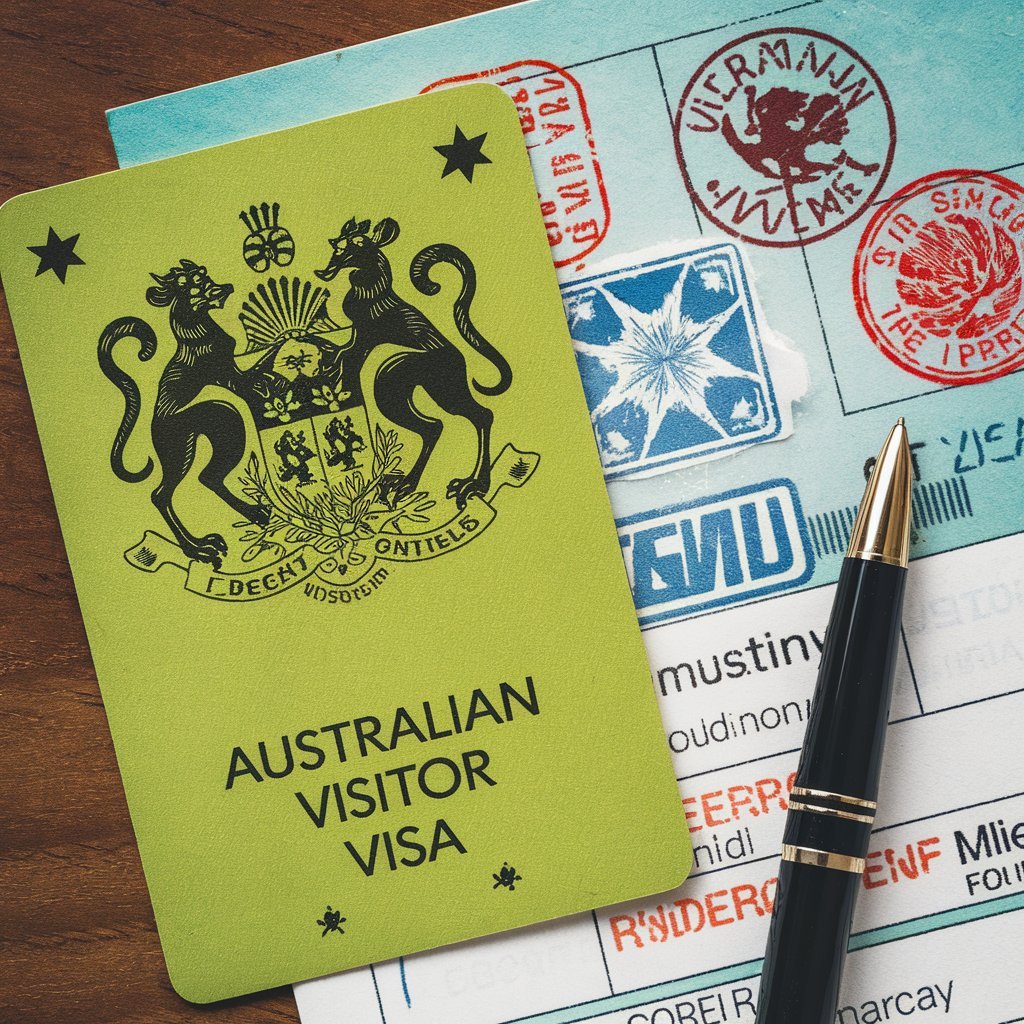Difference between subclass 189 and 190 Australian visas 2024
Confused about your Australian migration options? Discover the key difference between subclass 189 and 190 Australian visas. So, choose the best pathway for your goals.
If you are a skilled worker, here is the good news. The Australian immigration system provides the best visa options. There are two popular visas, subclass 189 and subclass 190 visa. But what is the difference between them? And are we suitable for it? These are the questions of many people.
In this article, you will learn about the hidden details of subclass 189 and 190 visas. In the end, some debunked myths are shared.
Let’s get started.
Overview: Difference between subclass 189 and 190 Australian visas
Subclass 189 is the independent skilled visa. If you are a skilled worker, you can apply for it. You can live and work permanently here. In addition, you don’t need a sponsor such as an employer or relative. So, this is a good and flexible option.
According to the latest updates of Australian immigration system,
“New Zealand, Hong Kong, and British National passport holders are eligible for subclass 189 visa.”
In contrast, subclass 190 is the nominated skilled visa. You need a sponsor or nominator. Moreover, people from any country can apply. You can also live and work here permanently. But you will live two years in the nominating state.
According to the immigration system,
The nominated people by any Australian territory or government are eligible for subclass 190 visa.”
Let’s discover the key difference between subclass 189 and 190 Australian visas.
Key Difference between subclass 189 and 190 Australian visa
1. Nomination Requirement
The first point of difference between the subclass 189 and 190 visa is the nomination requirement. Subclass189 independent skilled visa does not need any nominator. Here, you can apply and work independently.
On the other hand, subclass 190 nominated skilled visa needs you to get nominated. Either the Australian state or territory should nominate the worker. Additionally, the nomination affects your future home in Australia. And you will live according to your nomination.
2. Occupation Lists
Your 90% eligibility depends upon your occupation. So, make sure to check the occupation list before applying for a visa.
Subclass 189: Medium and Long-term Strategic Skills List (MLTSSL)
Subclass 189 has the list of occupations that is MLTSSL (Medium and Long-term Strategic Skills List). Generally, these are high-demand occupations. The industries hire long-term workers. For example, Doctors, Engineers, IT professionals, and accountants.
So, if your occupation is MLTSSL, then apply for a subclass 189 visa. Apply and work anywhere in Australia. Hence, you are not restricted to sponsorship or state nomination.
Subclass 190: MLTSSL or Short-term Skilled Occupation List (STSOL)
Firstly, suppose your occupation is listed on the MLTSSL list. Then, you can also apply for a subclass 190 visa. But the only difference is the nomination requirement. However, your chances of getting nominated are high. Let me explain how. These occupations are in high demand. Many territories or states may nominate you.
Secondly, another occupation list is STSOL (Sort-term Skilled Occupational List). Only specific Australian states need these workers. Such occupations include chefs, marketing people, and kindergarten educators.
Each state or territory has its list of in-demand occupations. First, check which occupation is needed and by which state. So, you can be nominated.
The key difference between subclass 189 and 190 Australian visas is that you can apply for both visas if your occupation is on MLTSSL. Meanwhile, you can not apply for subclass 189 if you have an occupation from STSOL.
3. Points System
The point system is the main part of the visa process. When a person applies for a visa, his eligibility is checked through a point system. The score of the point system covers the following factors:
- Age
- Skills
- Work experience
- English proficiency
- Education
The passing score of both visas is 65. Achieving this score is the difference between subclass 189 and 190 Australian visas.
Subclass 189: Points System Without State Nomination
For the Subclass 189 visa, applicants will make their points independently. So, they try to get maximum points.
Let’s see what the conditions are for getting maximum points.
- Age between 25-33 years (30 points)
- English language Proficiency high scores in IELTS and PTE (20 points)
- Skilled Work Experience of at least 5- 8 years
- Educational Qualifications such as bachelor’s or master’s degree
- Other factors include the region of study, partner skills, and professional year completion.
So, it is dependent on you to get the subclass 189 visa. The reason is that you will not get any additional points.
Subclass 190: Points System with Additional Nomination Points
When applying for subclass 190, you will get the extra 5 points due to nomination. So, the extra points will help the applicant to get the passing 65 points easily.
Let’s suppose you have gotten 60 points in on your own. So, the extra 5 points will make you eligible. Isn’t it great?
4. Residency Requirement
The residency requirements for Subclass 189 and Subclass 190 visa holders are different.
Subclass 189: No Residency Requirement
If you are a freedom lover, a subclass 189 visa is best for you. Here are some advantages of residency you will get with this visa.
1. Freedom to Live Anywhere: You can live and work anywhere in Australia. It is up to you whether you choose Sydney, Melbourne, or Perth.
2. No restriction to a Specific State: You have no restriction on living in one state. Because the subclass 189 visa does not depend upon state nomination.
Subclass 190: State-Specific Residency Requirement
If you get the subclass 190 visa, you will need to follow the following conditions.
1. Commitment to the Nominating State:
You will have to commit to contributing to the economy of the nominating state.
2. Two-Year Residency Obligation: You will have to live in the nominating state for at least the first two years.
After completing the first two years, you can move to any other state in Australia. It is up to you where you will live or work.
5. Processing Time
The processing times of both visas are different. The processing time of a subclass 189 visa can take up to 18 months. However, the subclass 190 visa has a faster processing time. Due to state nomination, the processing time is 11-14 months.
This is another key difference between subclass 189 and 190 Australian visas.
6. Application Process and Cost Difference between subclass 189 and 190 Australian visas
Subclass 189 Visa:
- First, you must submit an Expression of Interest (EOI) through the SkillSelect system.
- Secondly, you will receive an invitation to apply based on your score on points.
- Thirdly, you must submit your visa application within 60 days. Also, upload the necessary documents. For example, skills assessment, English proficiency results, and identity documents.
- Then, wait for a decision from the Department of Home Affairs.
- Pay the fee of AUD4,770.00.
Subclass 190 Visa:
- Firstly, submit an Expression of Interest (EOI) through SkillSelect.
- Secondly, a nomination must be obtained from a state or territory government.
- Thirdly, you will get an invitation to apply based on your points score and state nomination.
- Fourthly, submit your visa application with the required documents within 60 days.
5. Then, Wait for a decision from the Department of Home Affairs.
6. Pay the fee of AUD4,765.00
7. Difference Between Subclass 189, 190, and 491 Visas
People often mix these three visa classes: subclass 189, 190, and 491. Undoubtedly, all these visas will grant you permanent residency. However, the policy is different,
The subclass 491 visa is a temporary visa but it can get you permanent residency in a few years. It means that you will be a temporary resident in Australia for three years. Later on, the state will grant you permanent residency.
In contrast, subclass 189 and 190 provide you with immediate permanent residency.
The Subclass 491 visa is a temporary visa that offers a pathway to permanent residency
8. Pros and Cons of Subclass 189 and 190 Visas
Subclass 189:
Pros
- Residence flexibility.
- No need for Nomination or sponsorship.
- Immediate PR (Permanent Residency).
Cons
- Higher Competition.
- Higher points requirements.
- Longer Processing time.
Subclass 190:
- Additional Point makes it easier to qualify.
- Faster Processing.
- Occupation Flexibility as it includes STSOL along with MLTSSL.
Cons of Subclass 190:
- Residency Restriction for two years.
- Limited Flexibility because of reliance on the state.
Common Myths Debunked- Subclass 189 and 190
Myth 1: You Cannot Apply for Both Subclass 189 and 190 Visas
- Fact: You can apply for both visas. You just have to submit Expressions of Interest (EOIs). The EOI is a formal document that tells your skills, qualifications, work experience, etc.
Myth 2: You Must Live in a Nominating State Forever with the Subclass 190 Visa
- Fact: You only need to live in the nominating state for two years. After two years, you can work and live anywhere in Australia.
Myth 3: Subclass 189 is Easier to Get than 190
- Fact: It depends on the points score and occupation of the person. Moreover, subclass 189 is harder to get due to high competition.
Difference between subclass 189 and 190 Australian visas: Which Visa is Better?
The decision between Subclass 189 and Subclass 190 depends on your personal preferences.
If you have high points and MLTSSL skills then the Subclass 189 visa may be the better option. On the other hand, if you have an occupation from STSOL, then subclass 190 is a good option. In addition, if you have no problem with living in a specific state, then choose subclass 190.

Final thoughts
First Understand the difference between subclass 189 and 190 Australian visas. Then, choose the visa that suits you well. If you want fast visa processing and extra points, then go for subclass 190. In contrast, if you want residence and work flexibility, then choose subclass 189.
Both visas give you golden opportunities. So, don’t miss the chance and apply fast.
FAQS
What happens if my EOI for the Subclass 189 or 190 visa is not selected?
In case of rejection, you can keep EOI in a system for up to two years. So, you can update your EOI with any new qualifications, skills, or experience.
Is Subclass 189 harder to get than 190?
It depends on the points score and occupation of the person. Moreover, subclass 189 is harder to get due to high competition.
What is the success rate of 189 visas?
The success rate for Subclass 189 visas generally ranges from 80% to 90% for applicants. 75% of visa applications of subclass 189 are processed in 7 months. At the same time, 90% of visa applications take a processing time of 8 months.

One Reply to “Difference between subclass 189 and 190 Australian visas 2024”
Can we apply for an Australian ETA Visa after the rejection? How to
16 Sep 2024[…] my opinion, you don’t have the query, like, can we apply for an Australian ETA visa after the rejection? So, just correct your mistakes first. And then resubmit the application for an […]